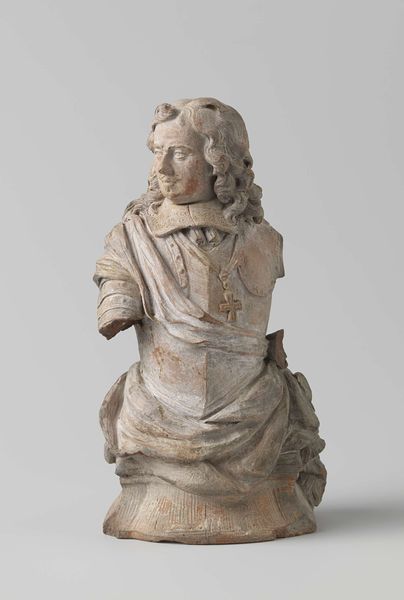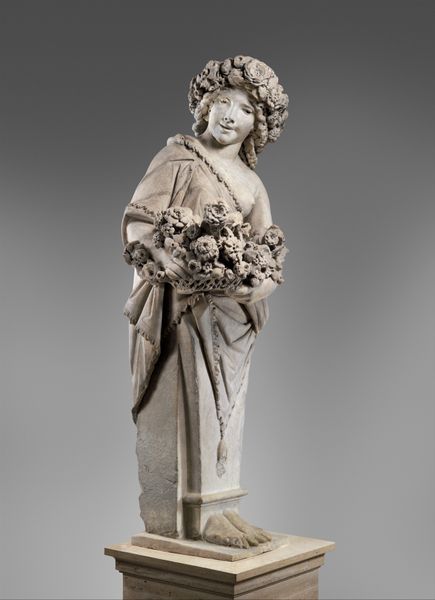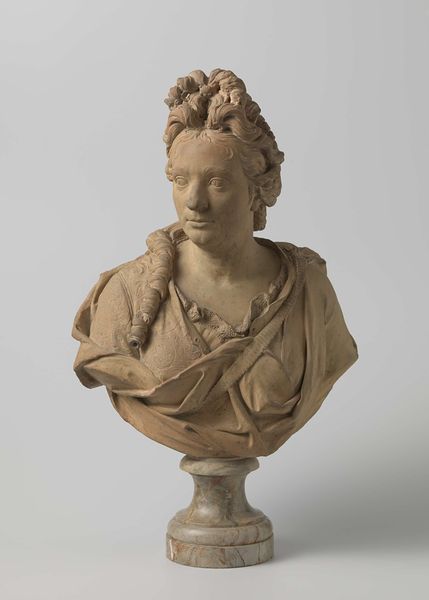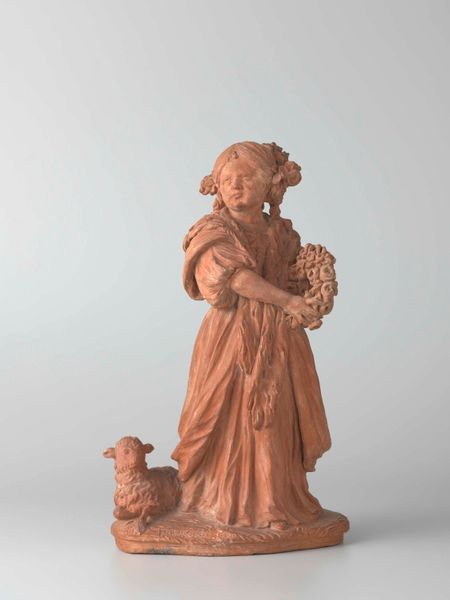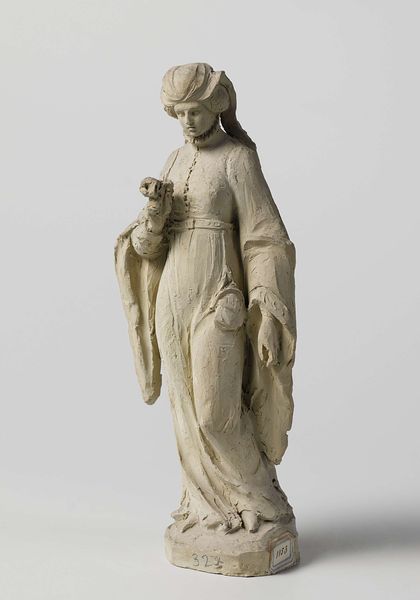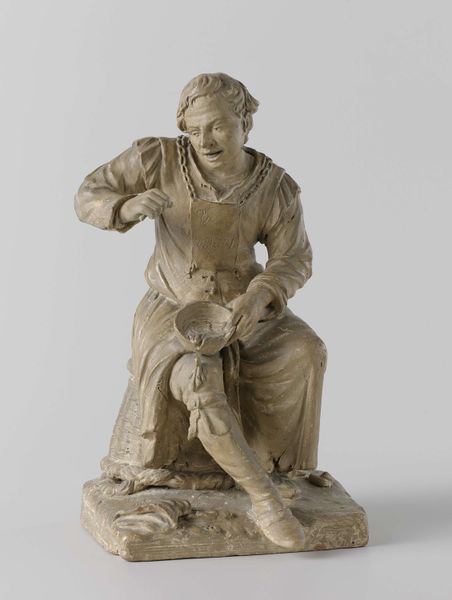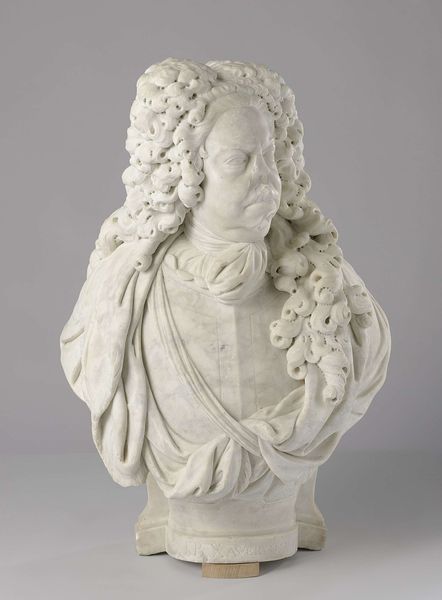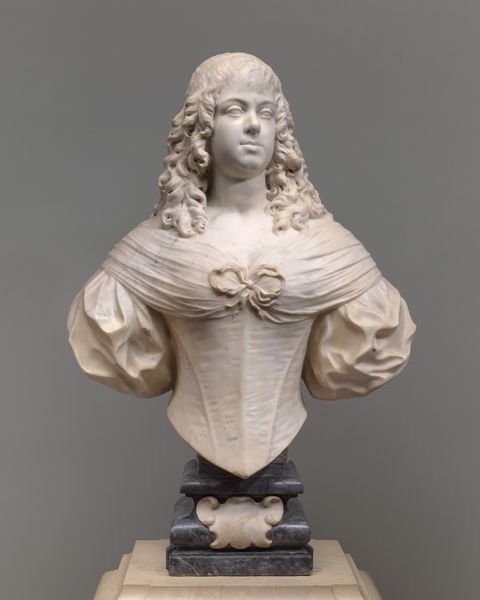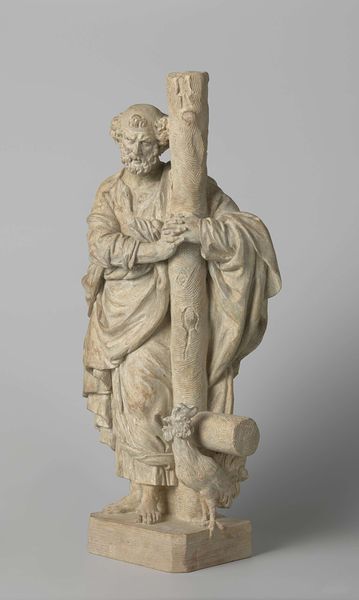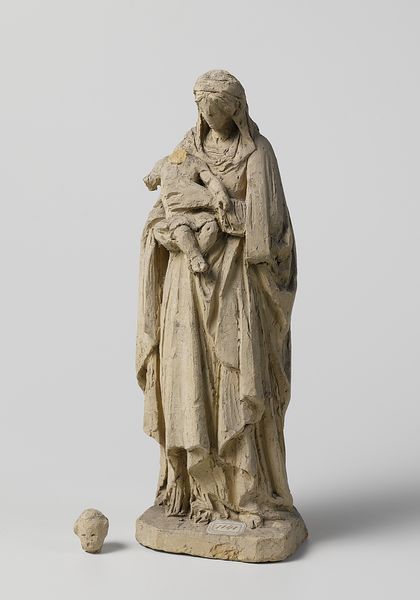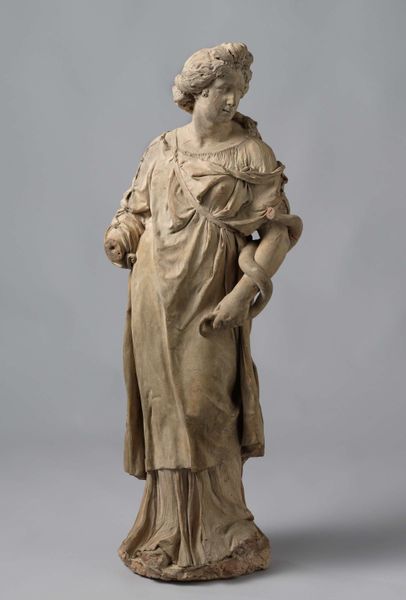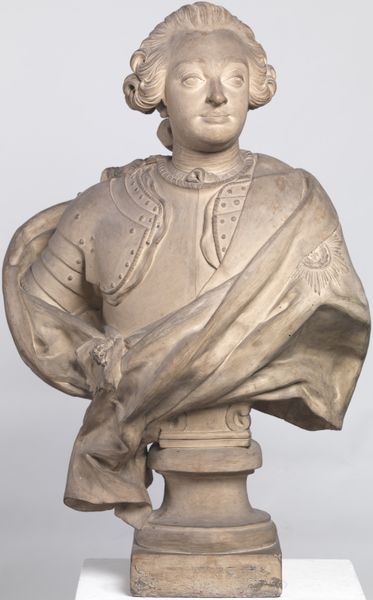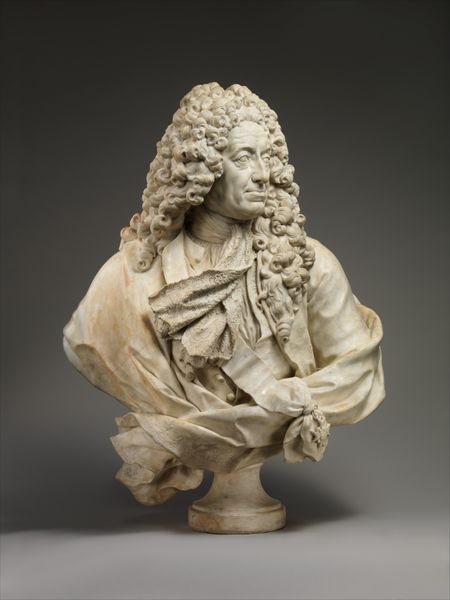
carving, sculpture
#
portrait
#
carving
#
baroque
#
sculpture
#
classical-realism
#
sculpture
Copyright: Rijks Museum: Open Domain
Editor: So here we have a terracotta sculpture, "Bust of William IV," sculpted by Jan Baptist Xavery in 1733. It’s quite stately, with that ornate armor and ermine stole. There's a solemnity to it. What strikes you about this piece? Curator: You know, I see echoes of theatrical swagger, don’t you think? It's Baroque opulence, but tempered, slightly subdued, like a king trying to project both power and approachability. Notice the meticulous detailing in the hair contrasting with the softer modeling of the face—it almost feels like a performance, a carefully constructed image for the ages. But who was he really beneath the wig and armour, I wonder? Does it project authority? Or does it whisper insecurity? Editor: I hadn’t considered the insecurity angle! So, the choice of terracotta – how does that factor into portraying someone meant to embody power and permanence? Wouldn't marble have been the go-to? Curator: Exactly! Ah, there's the clever twist, isn't it? Terracotta gives it a warmth, an immediacy that marble lacks. It suggests vulnerability, a human connection. It's a conscious choice, a subversion of expectations, perhaps? Like a monarch hinting, "I'm one of you… sort of!" He's grounded, earthy, in a way. Don't you feel a connection to him despite the distance of time? Editor: I do see that warmth now. The texture feels almost like skin. It really humanizes him, makes him less intimidating, less a figure on a coin. Curator: Precisely. Xavery offers us not just a ruler, but a glimpse of a human, caught in the elaborate costume of power. Editor: This sculpture now feels like a riddle, wrapped in an ermine stole! I will never look at Baroque portraiture the same way again!
Comments
rijksmuseum about 2 years ago
⋮
This is a preparatory modello for a marble bust that Xavery made of the 22-year-old Prince William IV. Three years later, it was followed by a bust of Princess Anne of England, whom William IV married in 1734. Both marble busts were placed in the Oranjezaal (Orange Hall) at Huis ten Bosch, the royal couple’s residence near The Hague.
Join the conversation
Join millions of artists and users on Artera today and experience the ultimate creative platform.
